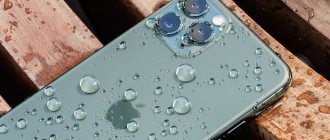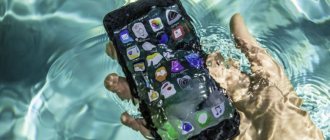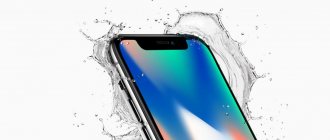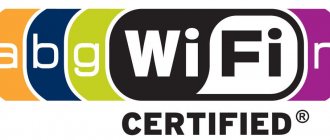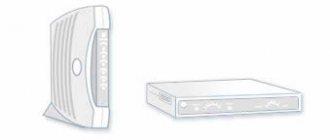Brief summary. This article is intended to answer questions about the degree of protection of equipment from dust and moisture. Many people see IP markings on electrical equipment and ask questions, what does ip 65 mean? Can products with IP44 be installed outdoors? What does ip 20 mean? what is the degree of protection ip54, what does ip 54 mean? In this article we will look in detail at ip 54, what kind of standard is used in the CIS and abroad. Let's give a detailed table of abbreviations for the degree of protection IP.
- Degree of protection ip › GOST, standard
- IP waterproof
- Degrees of IP protection › Table
- IP protection class
- IP 20
- IP 30
- IP 44
- IP 54
- IP 55
- IP 65
Degree of protection ip › GOST, standard
The degree of protection IP (Ingress Protection Rating) is a systematization of the protection values of the housing (meaning the external coating) of electrical appliances and electrical equipment under the influence of various negative conditions, such as the influence of humidity, open seepage of liquid, pollution, as well as exposure to various environments.
This numeric index defines the international IP standard. Among them is the standard of the International Electrotechnical Commission IEC 60529, in the CIS GOST 14254-96, GOST 14254 and in Germany - DIN40050-9.
The current standard IEC 60529:2013 was adopted in 2013. The current GOST 14254 - 2015 in the Russian Federation was introduced on 2022.03.01. It differs from the previous GOST 14254-96 in the moisture protection index: the new current GOST 14254 - 2015 has 10 indices from 0 to 9. The ipx9 index indicates protection from high-temperature water jets supplied under high pressure (see below). Current GOSTs for IP protection level:
- IEC 60529:2013
- GOST 14254 - 2015,
- DIN40050-9,
- DIN EN 60529 (VDE 0470).
The degree of protection is provided when selecting various industrial equipment, taking into account the external environment where it will be used. So, when it is planned to change the wiring of a house, then when selecting a distribution panel, one should take into account the negative environmental conditions. There will be some impact on appliances and equipment that are located outdoors or in a building.
For electrical products, the protection class is given in the form IP [number 1] [number 2] .
[number 1] shows the class of protection against exposure to external environmental objects.
7 levels of protection from external objects from 0 to 6 are standardized:
- “0” - no protection from external objects;
- “1” - the casing is protected from the impact of third-party objects with a diameter of 50 mm or more, from contact with the back of the hand;
- “2” - protection from the negative effects of third-party objects with a diameter of more than 12.5 mm, from touching the case with your fingers;
- “3” - there is protection from foreign objects with a diameter above 2.5 mm, conductors, small tools (hand);
- “4” - protection from foreign objects with a diameter of 1 mm or more - these are conductors fixing nuts and bolts;
- “5” - complete protection from foreign objects of any size, incomplete protection from dirt and dust (a small amount of dust is allowed to fly inside the housing without affecting the functionality of the devices inside the electrical panel);
- “6” - complete protection from various objects, complete dust resistance.
What is IP67?
IP (Ingress Protection rating) - standards for protecting the housing of any electrical equipment from the harmful effects of various environmental factors.
Depending on the level of security of the smartphone, the IP is assigned a two-digit number, in this case “67”. The first digit (from 0 to 6) determines the device’s ability to block all kinds of solid objects (dust, sand) of different sizes, from 50 mm to 1 mm or less. IP6 – our device is completely dustproof. The second number (from 0 to) sets the degree of water resistance of the gadget. And here some nuances await us. When many people hear the word water resistance, they understand complete protection from water, and some dream of being able to shoot from a smartphone at great depths. This is not so. The IP67 standard will protect Our device is only resistant to partial or short-term immersion in water to a depth of no more than 1 meter.
Unfortunately, nowadays, the substitution of the terms “water resistance” and “water resistance” is used for marketing purposes, although the concepts are different. So you shouldn’t unquestioningly believe advertising - you need to look at the prescribed IP standard and find detailed information on it.
Thus, a smartphone with IP67 protection will be completely resistant to sand, dust and other small things, as well as short “dives” to a depth of 1 meter. One of the most famous representatives of such protection is the Samsung Galaxy S7. More budget options include Alcatel OneTouch Go Play 7048X and Blackview BV5000 with powerful batteries and 5-inch displays.
Of course, with such gadgets it will not be possible to conduct underwater photography, but spilled water and rainy weather on the gadget will not damage the smartphone.
IP waterproof
[number 2] demonstrates the degree of protection against the negative effects of moisture (exposure to liquids, dampness). There are 10 degrees of protection of the case from moisture:
- “0”—no protection;
- “1” - the shell is protected from condensation moisture and raindrops falling strictly in a vertical position;
- “2” - the case is protected from drops, the angle of incidence is up to 15 degrees;
- “3” - there is protection against drops, the angle of incidence is up to 60 degrees;
- “4” - there is protection from liquid drops of any direction;
- “5” - protection from short-term exposure to a fluid flow (jet) of random direction;
- “6” - protection of the hull from prolonged exposure to a strong flow of liquid (water) of random direction, as well as from waves at sea;
- “7” - there is protection against moisture penetration into the inside of the equipment body during short-term immersion in liquid (water) to a depth of 1 m. In this case, there may be penetration of a small volume of liquid into the middle, which does not have an adverse effect on the performance of the products;
- “8” - there is protection against liquid flowing into the products when immersed to a given depth for a given period of time). The body of the products in this version is completely waterproof;
- “9” - there is protection against hot water jets under pressure getting into the products.
The degree of protection of the outer casing (shell) from the influence of negative external conditions is established on the basis of performing a test of the working element. Below are tables with a detailed explanation of the degrees of protection, testing methods and sequences of their implementation.
For a convenient presentation, the classification of IP protection is shown in the figure.
Figure - Classification of IP protection
Difference between IP67 and IP68
Today, more and more premium smartphones are rated IP67 or IP68. For example, the Apple iPhone 8 and 8 Plus are IP67 rated, while the Samsung Galaxy S20/S20 Plus, as well as the iPhone 11 Pro and Pro Max are IP68 rated. What is the difference between the two standards?
As mentioned above, the number “6” means absolute protection against dust. This means that all six gadgets in question (Apple iPhone 8/8 Plus, iPhone 11 Pro/Pro Max, Samsung Galaxy S20/S20 Plus) are completely dustproof.
The second number (7/8) indicates water resistance. Thus, a device with an IP67 rating can withstand immersion in water of 1 meter for 30 minutes. In this case, the water can only be fresh. A device with an IP68 rating can survive immersion in water to a depth of two meters for 30 minutes without consequences.
It is worth noting that each manufacturer gives its own recommendations for the use of devices with an IP68 rating. Thus, Samsung indicates that the Galaxy S20 and S20 Plus can withstand immersion in water of 1.5 meters for 30 minutes. In turn, Apple claims that the iPhone 11 Pro and Pro Max, with the same IP68 protection rating, can withstand immersion for the same time, but to two meters.
When talking about IP67 and IP68 waterproof ratings, it's important to note that we're actually talking about water resistance, not waterproofing. And even at shallow depths, water can exert pressure on the housing above the permissible limit, and water will enter the device. It's also worth noting that smartphone manufacturers' warranties do not cover water damage.
Degrees of IP protection › Table
It is convenient when the degrees of protection of electrical equipment ip are summarized in tables. Below are three tables for IP decryption protection. They comply with GOST 14254 - 2015.
Table of degrees of IP protection from access to dangerous parts , indicated by the first digit of the index
IP protection table (first digit)
Table of the degree of protection of electrical equipment IP from water (second digit)
In addition to the first two digits, the protection degree marking may contain two letters. The one that comes first after two numbers is called additional, and there may also be a letter with auxiliary information. The additional letter indicates the level of human protection from access to dangerous parts.
When a person touches electrical equipment, the following types of protection are distinguished:
- “A” - with the back of the hand;
- “B” - fingers;
- “C” - hand tool;
- "D" - single conductors.
The first number after IP and the additional letter in the marking have different meanings. The number indicates the protection of the housing from the negative influence of a person or any objects, and the additional letter indicates the protection of a person from the negative influence of elements of the electrical equipment itself.
For example, the first number “3” indicates the protection of the housing from hand-held tools, that is, the equipment will not be damaged when exposed to hand-held tools. The additional letter “C” certifies that personnel will be protected from the influence of unfavorable factors, namely electric shock, if the shell is exposed to hand tools.
The second letter of the protection category marking after the numbers displays auxiliary information.
- "H" - high voltage equipment,
- “M” - the test was carried out while moving,
- “S” - the test was carried out in a stationary (motionless) state.
"M" and "S" are usually used for equipment with moving parts.
Samples of protection degree markings with additional and/or auxiliary letters - IP 20C, IP 67S, IP 55DS.
Additionally, instead of numbers, there are “X” symbols. This symbol means that protection from foreign objects or water is not standardized for these components of the electrical product. Marking examples – IP X5, IP 1X, IP XX.
In addition, the product may be marked with not one, but several degrees of protection. Multiple degrees of protection are noted if it is necessary to indicate protection simultaneously from several negative influences, and the latter correspond to different degrees when classifying protections. For example, the product is protected from the effects of low water flow and short-term immersion in liquid. Under such conditions, the following marking can be given - IP 65 / IP 67.
Does IPX8 mean waterproof?
No. The term "waterproof" has little to do with reality. A truly waterproof device does not allow water to enter at all under any circumstances. This happens extremely rarely. The mentioned IPX8 rating ensures the device's functionality after accidental or acceptable contact with water, but this does not mean that the gadget must be constantly used underwater.
In fact, if you come across waterproof gadgets (watches, for example) with the appropriate markings, then there is still no 100% guarantee that the item will survive being submerged in water. If the specifications don't say anything, then the product you purchased most likely hasn't been individually tested. Manufacturers test only one new unit, and all other devices of the same configuration receive markings indicating water resistance.
If you need a device that is designed for underwater use and diving, then you should pay attention to specialized products with an ISO 6425 rating. Watches with this protection are individually tested and must withstand immersion 25% deeper than stated in the marking. In addition, such watches can be used underwater repeatedly for long periods. Pressure changes during dives and ascents should not affect the operation of the device.
IP protection class
Often, when they mean “degree of protection,” they say “IP protection class.” From a technical point of view, these are the same thing, that is, synonymous terms. In the regulatory literature, the wording “IP protection classes” is usually not used, but you can often come across questions: “IP54 protection class” or “IP65 protection class”, or “IP21 protection class, what is it?” In these cases, an appropriate degree of protection is meant. In this case, no other or separate standards are provided beyond those indicated above.
Let us next consider the commonly used degrees of protection of electrical products and equipment. Let's give examples of IP decoding and determine where and in what cases the bodies of these markings are used. To be specific, let’s take the case of electrical switchboard housings.
IP 20
IP 20 – there is protection from large, large objects with a diameter above 12.5 mm (indicated by “2”), there is no protection from water, since the corresponding position is “0”.
Such IP 20 equipment is suitable for installation in dry buildings, where the appearance of water (splashes) on the housing is not expected, and there is no exposure to objects with a diameter of up to 12.5 mm. In the case of a switchboard housing with IP 20, it should be installed in rooms, apartment corridors, but should not be used, for example, in a bathroom. Table - Explanation of the degree of protection IP20 (dust and moisture protection)
| Protection from external solid objects (dust protection IP20) | Water protection (IP20 waterproof) |
| 2 | 0 |
| Protected from external solid objects with a diameter greater than or equal to 12.5 mm | No protection |
IP 44
IP 44 – degree of protection indicates that the shell or outer casing of the product is protected from foreign objects with a diameter of 1 mm or more. These include various wires, pins, nuts, hand tools, screwdrivers, etc. In addition, there is protection from humidity and random splashes of water. Equipment with such a housing can be used in structures with high humidity, damp, and also outdoors, but water should not be allowed to enter by stream. The product with an IP 44 housing does not have dust protection. If the dust content of the room or premises is high, you should not use a shield with IP44.
IP 44 electrical panel enclosures are suitable for buildings with high humidity, as well as for installation outside residential premises, but under the roof. This will prevent open exposure to the water jet.
Exceptions and features
Often the second number is related to the first: if the device body is closed from water jets (4-5), it automatically becomes protected from contact with foreign objects (5). But there are exceptions - for example, waterproof cases for gadgets have an IP38 standard.
Waterproof rating is not cumulative beyond level 6: the housing can withstand liquid immersion (7) but be vulnerable to splashing water under pressure. The protection class for such devices is indicated twice: IP65/IP68 - complete dust protection, resistance to water jets (not under pressure) and operation in a liquid environment - the shell may not withstand powerful jets.
It is strictly not recommended to deliberately check compliance with the stated standards on an expensive gadget. In case of problems with warranty service, it will most likely be refused.
Sources
- https://AndroidLime.ru/ip67-standart
- https://MobiDevices.ru/ingress-protection-rating
- https://www.e-katalog.ru/post/3229/122-chto-takoe-ip67-68-i-mil-std-810-standarty-zaschity-elektronnyh-ustroystv/
- https://ElectricPS.ru/ingress-protection-ip
- https://odinelectric.ru/knowledgebase/chto-takoe-stepen-pylevlagozashhity-ip67
- https://SmartPhonus.com/%D1%81%D1%82%D0%B5%D0%BF%D0%B5%D0%BD%D1%8C-%D0%B7%D0%B0%D1%89% D0%B8%D1%82%D1%8B-ip67-%D0%B8-ip68-%D1%80%D0%B0%D1%81%D1%88%D0%B8%D1%84%D1%80% D0%BE%D0%B2%D0%BA%D0%B0/
- https://legnum.info/chto-oznachaet-klass-zashhity-ip67/
- https://WiFiGid.ru/poleznoe-i-interesnoe/ip67
IP 55
IP 55 – the product body is fully protected from the mechanical negative influence of various objects and partly from the penetration of dust. IP 55 is used in damp rooms, outdoors, where short-term exposure to the shell (housing) of equipment may occur in the form of a jet of water. Typically, electrical panel housings intended for outdoor installation have an IP rating of 55. This panel can be installed almost anywhere on the house’s site. It does not require a canopy.
